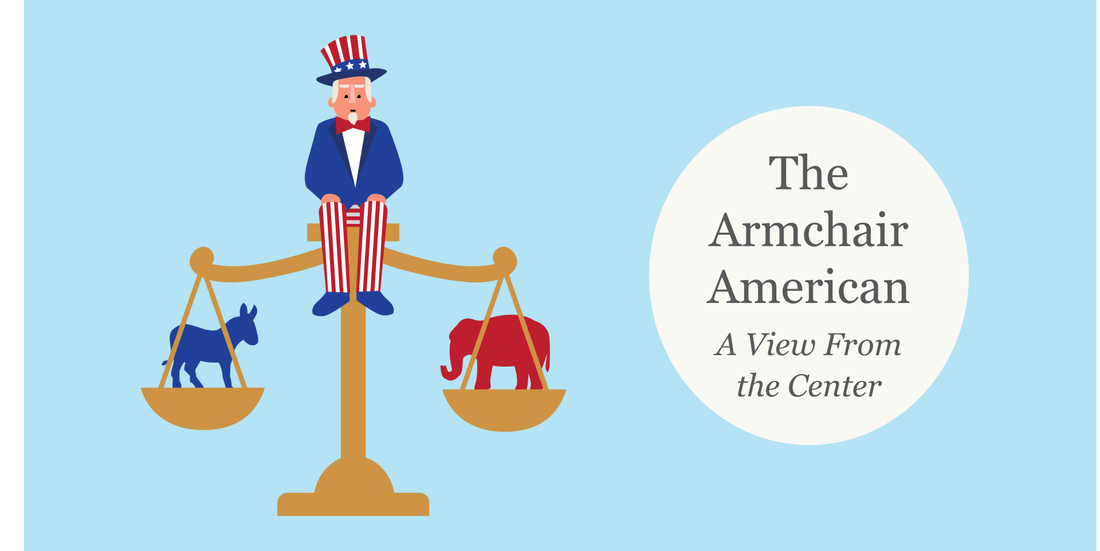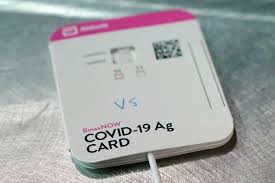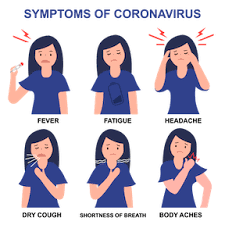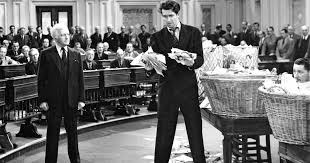|
By now most of you have heard that the Biden Administration is making one billion rapid at-home COVID tests available to the American public. This is in response to criticism that the government is not doing enough to combat the pandemic, particularly in the area of testing. There have been widespread shortages of at-home COVID tests and episodes of price gouging, so this seems to be a step in the right direction. How do you get the free test kits, and what should you know about their use? How to Order Free At-Home COVID Tests: The Federal Government’s new website to process orders is up and running. Each household is entitled to four free at-home rapid COVID tests. The site is easy to use. It took me less than five minutes to order my free tests. Simply log on to https://www.covidtests.gov/, and input your name and shipping address. The U.S. Postal Service will process and ship the tests to your home within 1-2 weeks. If you don’t have internet access you may order your free COVID tests at (800) 232-0233. The website is not able to handle orders from multiple households living at the same address, so there have been a few glitches. For those situations you may call the Postal Service help desk at (800) 275-8777, or file a service request at https://emailus.usps.com/s/the-postal-store-inquiry. The initial rollout of free at-home COVID tests is limited to four tests per household in order to promote broad access to the limited supply. But there are other ways to receive additional COVID tests at little or no cost to you. The test kits are available at some community health centers, rural clinics, and some federal testing sites. Private Health Insurers Mandated to Cover At-Home COVID Tests: As of January 15th private health insurers are required to fully reimburse for up to eight at-home rapid COVID tests per person, each month. The insurer will not be able to apply co-payments or deductibles, and there is no requirement for a doctor’s order or a clinical assessment. The government is incentivizing insurers to work with pharmacies and other outlets to provide the at-home COVID tests with no out-of-pocket costs to the consumer. For specifics on reimbursements and no-cost programs, reach out to your health insurance provider. Which At-Home COVID Test Will I Receive: There are thirteen at-home rapid antigen tests approved for use by the FDA to detect COVID. Only an approved antigen rapid test kit will be made available through the free program, but you do not have the ability to request a particular brand. Here are the currently approved at-home COVID antigen tests:
These tests are fairly easy to use and results are available in 15-20 minutes. Antigen tests detect the presence of a specific viral antigen, which implies current viral infection. The test requires you to swab each nostril for a specified period of time. The swab is then inserted into a buffer solution which then comes into contact with a test strip containing antibodies. A colored line appears on the test strip if it detects the antigen, indicating a positive test for the virus. Sensitivity of Rapid Antigen Tests: Based upon ongoing research studies, the FDA updated its testing guidance in December to indicate that the rapid antigen tests for COVID have reduced sensitivity to the Omicron variant. The PCR (Polymerase Chain Reaction) test remains the gold standard for the detection of all variants of the coronavirus. PCR tests are run in labs using sophisticated equipment, and the results may take several days to receive. Due to this delay, PCR is not a good screening tool for COVID. During a PCR test the genetic material from the virus is copied billions of times. This amplification allows even tiny amounts of genetic material from the virus to be detected. Therefore, it can detect the presence of the coronavirus even before the onset of symptoms, but also long after your symptoms subside and you are no longer contagious. For rapid antigen tests to be positive, there needs to be a high viral load. The viral load in most COVID patients is usually too low for the antigen test to detect until after the onset of symptoms, sometimes several days after. With the Omicron variant, people seem to be coming down with symptoms earlier in the infection, before viral loads are large enough to be detected by a rapid antigen test. This doesn’t mean that these tests don’t work, but it does mean that when and how the tests are used can impact results. If you test positive on a rapid antigen test, there is a high probability that you have COVID. But if you test negative, you may still have COVID. The two most recently approved rapid antigen tests show higher sensitivity to the detection of the Omicron variant than previous tests. These are the “Clinitest Rapid COVID-19 Antigen Self Test” by Siemens-Healthineers, and the “Standard Q COVID-19 Ag Home Test”, by SD Biosensor. When to Use At-Home Rapid Antigen Tests: These tests are most accurate when you are symptomatic for COVID. The CDC recommends using an at-home test if you have a fever, cough, sore throat, respiratory symptoms, muscle aches, or lose of taste or smell, https://www.cdc.gov/coronavirus/2019-ncov/testing/self-testing.html#anchor_1638718975230. Rapid COVID tests are also recommended for use five days after a potential COVID exposure, and as part of test-to-stay protocols in schools and workplaces. For best results I would wait 2-3 days after the onset of symptoms before testing with a rapid antigen test. A positive test result indicates that you likely have a current infection, and you should isolate and inform close contacts. A negative test result indicates that you may not be infected and may be at low risk of spreading disease to others, though it does not rule out an infection. If you plan to visit a vulnerable person in the near future, such as your grandmother, plan ahead. Minimize your social contacts for about a week and take a minimum of two tests prior to your visit. The final test should be within 24 hours of your visit. If you are symptomatic and get a negative test, repeat the test after 24-48 hours. This type of serial testing is often required for an accurate result, but it becomes problematic when you have a limited supply of tests available. Never rely on a single negative test, particularly if you have symptoms. It is best to self-isolate and have a PCR test performed, or assume that you are positive and take the necessary precautions. Other Considerations:
The government is discouraging the use of cloth face-masks. The CDC has updated its face-mask guidance to emphasize the better protection offered by N95 and KN95 masks. The Biden Administration is making available 400 million N95 masks free of charge to the American public. The free masks will be made available through select pharmacies and community health centers. You can find a list of locations offering the free masks at this link. The lack of adequate testing has hindered the United States’ response to the pandemic since day one. Most experts acknowledge that testing is an important step in mitigating virus spread. It appears as if the Biden Administration has finally determined that vaccines alone will not end this pandemic. The programs to provide free test kits and face masks to the American public are steps in the right direction. Now it’s time for every American to avail themselves of these tools and do their part to bring this pandemic to an end. If you enjoy reading this type of commentary please subscribe to my blog and tell a friend. You will receive an email notification when new blogs are posted. The email will come from the site’s email: armchairamerican1776 @gmail.com.
Thanks, Armchair American
0 Comments
Once again, a major piece of legislation comes to a grinding halt in the United States Senate. Even though the Democrats control both Houses of Congress and the White House, they have been blocked by the Republicans from passing voting rights legislation. How can the minority party in the Senate hold so much power? Simply put, the Senate filibuster rule. What is the senate filibuster rule, and is it time to reform or eliminate it altogether? In order to answer these questions let’s take a look at the history of the filibuster and give it some perspective. What is the Senate Filibuster: Originally senators had the right to unlimited debate on the Senate floor and could prevent a vote on a bill by running out the clock with prolonged speeches. Under the current rules of the Senate, it takes 60 votes to end debate and move most bills to a vote. Without the 60 votes needed to end debate and move to a vote (a process called “cloture”), the filibuster rule essentially blocks the bill from proceeding. History of the Filibuster: The filibuster is not found in the Constitution and became possible with an inadvertent change to the Senate rules in 1806. Under the original Senate rules, cutting off debate required a motion that passed with a simple majority. The rule was dropped at the suggestion of Vice President Aaron Burr since it was seldom used and apparently not needed, https://www.brookings.edu/policy2020/votervital/what-is-the-senate-filibuster-and-what-would-it-take-to-eliminate-it/. This rule change had the unintended consequence of giving senators the right to unlimited debate without any formal way to end it. Seldom used prior to the Civil War, senators learned that they could prevent a vote on a bill that they opposed by tying up the Senate floor with endless speeches. The “talking filibuster” was born. In 1917 the Senate passed Rule 22, the first cloture rule. This rule allowed debate to end and a vote taken on a pending bill with a two-thirds majority vote by the senators present in the chamber. In 1975 the Senate reduced the number of votes needed to end debate to three-fifths of the senators present. When the Senate is at full strength, 60 votes are required to end debate and put the measure up for vote (invoking cloture). Silent Filibuster: On occasion, senators still take to the Senate floor and give protracted speeches in the style of “Mr. Smith Goes to Washington”. But this is rarely used anymore to prevent a bill from moving forward. It takes 60 senators to invoke cloture and move a bill forward. Therefore, as few as 41 senators can derail any piece of legislation by opposing a cloture motion. In practice, anytime 41 or more senators simply threaten to filibuster a piece of legislation, the Senate majority leader will not bring it up for consideration. In theory, any or all of these senators could filibuster on the Senate floor indefinitely, with no mechanism to end the debate. It would be a waste of time for the Senate to consider a piece of legislation that doesn’t have the 60 votes needed. Exceptions to the Filibuster Rule:
Reasons to Keep the Filibuster Rule: The Senate is often touted as a “deliberative body” and the “consensus-building” chamber of Congress. The very nature of the filibuster rule requires a consensus of 60 or more senators for any major legislation to be passed. Since it is rare for any political party to have a supermajority, the majority party must reach across the aisle and win the support of some members of the minority. This protects the rights of the minority party which may otherwise have no voice in the legislative process. The crafting of legislation is better served through bipartisanship and the give and take of negotiations in the building of a coalition around a piece of legislation. If the traditions of the Senate were practiced, and the political parties were actually interested in building a consensus, then the filibuster rule as it stands would be fine. Reasons to End or Modify the Filibuster Rule:
Proposed Changes to the Filibuster Rule: The Constitution gives each chamber of Congress the right to write its own rules. So, any change to the filibuster must come from the Senate. The process of changing the rules of the Senate is complicated, and not all rules are treated the same. Some can be changed by a simple majority and others require a two-thirds majority vote, https://sgp.fas.org/crs/misc/R42929.pdf. Here are some of the proposed changes to the filibuster that various politicians and think tanks are considering:
If I had my way, I would eliminate the filibuster rule altogether and restore the original Senate rules regarding the motion to end floor debates with a simple majority, the way it was prior to 1806. Short of this, I would eliminate the silent filibuster and make senators stand on the Senate floor and defend their opposition to the pending bill. In recent days President Biden indicated that he would support a change to the filibuster rule in order to get his voting rights legislation pasted. But Democrat Senator Krysten Sinema threw a wet blanket over that idea when she proclaimed in a floor speech that she would not support any changes to the filibuster rule. Democrat Senator Joe Manchin also reiterated his position that he would not support a “carve-out” to exempt voting rights legislation from the filibuster rule. Both Senators Manchin and Sinema support voting rights legislation, but without their support for a change to the filibuster rule, it cannot survive in the face of complete Republican opposition. Another victory for the minority party, and renewed calls to do something about the Senate filibuster rule. If you enjoy reading this type of commentary please subscribe to my blog and tell a friend. You will receive an email notification when new blogs are posted. The email will come from the site’s email: armchairamerican1776 @gmail.com.
Thanks, Armchair American |
AuthorThe Armchair American. Archives
November 2024
Categories
All
|



























 RSS Feed
RSS Feed